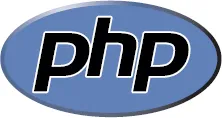
eBook - ePub
PHP in easy steps, 4th edition
Updated for PHP 8
Mike McGrath
This is a test
Partager le livre
- English
- ePUB (adapté aux mobiles)
- Disponible sur iOS et Android
eBook - ePub
PHP in easy steps, 4th edition
Updated for PHP 8
Mike McGrath
Détails du livre
Aperçu du livre
Table des matières
Citations
À propos de ce livre
PHP in easy steps, 4th edition demonstrates every aspect of the language you'll need to produce professional web programming results. Its examples provide clear syntax-highlighted code, which is freely downloadable, showing PHP language basics including variables, arrays, logic, looping, functions and classes.
- Install a free web server and the PHP interpreter to create an environment in which you can produce your own data-driven web pages.
- Write PHP server-side scripts; master PHP operators and control structures; process HTML form data; get cookies and session data; access Web Services APIs over HTTP... and much more!
PHP in easy steps, 4th edition is ideal for PHP newbies who want to quickly learn the fundamentals of server-side programming with PHP and create interactive web pages. Also, useful for PHP pros who want to grasp the new PHP 8 features and achieve optimum performance!
Updated for PHP 8.
Foire aux questions
Comment puis-je résilier mon abonnement ?
Il vous suffit de vous rendre dans la section compte dans paramètres et de cliquer sur « Résilier l’abonnement ». C’est aussi simple que cela ! Une fois que vous aurez résilié votre abonnement, il restera actif pour le reste de la période pour laquelle vous avez payé. Découvrez-en plus ici.
Puis-je / comment puis-je télécharger des livres ?
Pour le moment, tous nos livres en format ePub adaptés aux mobiles peuvent être téléchargés via l’application. La plupart de nos PDF sont également disponibles en téléchargement et les autres seront téléchargeables très prochainement. Découvrez-en plus ici.
Quelle est la différence entre les formules tarifaires ?
Les deux abonnements vous donnent un accès complet à la bibliothèque et à toutes les fonctionnalités de Perlego. Les seules différences sont les tarifs ainsi que la période d’abonnement : avec l’abonnement annuel, vous économiserez environ 30 % par rapport à 12 mois d’abonnement mensuel.
Qu’est-ce que Perlego ?
Nous sommes un service d’abonnement à des ouvrages universitaires en ligne, où vous pouvez accéder à toute une bibliothèque pour un prix inférieur à celui d’un seul livre par mois. Avec plus d’un million de livres sur plus de 1 000 sujets, nous avons ce qu’il vous faut ! Découvrez-en plus ici.
Prenez-vous en charge la synthèse vocale ?
Recherchez le symbole Écouter sur votre prochain livre pour voir si vous pouvez l’écouter. L’outil Écouter lit le texte à haute voix pour vous, en surlignant le passage qui est en cours de lecture. Vous pouvez le mettre sur pause, l’accélérer ou le ralentir. Découvrez-en plus ici.
Est-ce que PHP in easy steps, 4th edition est un PDF/ePUB en ligne ?
Oui, vous pouvez accéder à PHP in easy steps, 4th edition par Mike McGrath en format PDF et/ou ePUB ainsi qu’à d’autres livres populaires dans Informatique et Programmation en PHP. Nous disposons de plus d’un million d’ouvrages à découvrir dans notre catalogue.
Informations
Sujet
InformatiqueSous-sujet
Programmation en PHP1
Getting started
Welcome to the exciting world of the interactive web with PHP. This chapter demonstrates how to create a dynamic development environment with a web server and the PHP engine.
Introducing PHP
Installing the Abyss server
Installing the PHP engine
Integrating Abyss and PHP
Embedding PHP script code
Scripting by the rules
Improving performance
Enabling JIT compilation
Summary
Introducing PHP
The most appealing modern websites provide a customized user experience by dynamically responding to some current conditions – user name, time of day, latest blog, shopping cart contents, etc. Many of these dynamic websites are created using PHP.

This is the official logo of the PHP project – the official online home of PHP can be found at php.net
What is PHP?
PHP is a widely-used general purpose scripting language that is especially suited for web development and can be embedded into HTML. It was created by programmer Rasmus Lerdorf, as a set of scripts to maintain his website that he released as “Personal Home Page Tools (PHP Tools) version 1.0” on June 8, 1995.
The tools were extended in the version 2 release of 1997, and the name changed to become a recursive acronym “PHP: Hypertext Preprocessor” in version 3 the following year. Performance, reliability and extensibility were improved in 2000 with the release of PHP4, which was powered by the Zend engine virtual machine.
Subsequently, PHP5 was released in 2004 powered by the new Zend II engine and produced as free software by the PHP group. A planned experimental version PHP6, which intended to introduce native Unicode support throughout PHP, was abandoned but PHP7 was released in 2015. PHP8 was released in 2020 and offers “Just In Time” (JIT) compilation for improved performance. Today, PHP is installed on over 20 million websites and 1 million web servers.
Why is PHP popular?
•PHP is extremely simple for a newcomer, but offers many advanced features for a professional programmer.
•PHP code is enclosed in special start and end processing tags that allow you to jump into and out of “PHP mode”, to implement instructions within an HTML document.
•PHP code is executed on the server (“server-side”), unlike JavaScript code that is executed in the browser (“client-side”). The client receives the results of running the script without knowing what the underlying code was. Recently, server-side has become known as “The Cloud”.

This is the “elePHPant” – the mascot of the PHP project, designed by Vincent Pontier.
Understanding The Cloud
Whenever a user asks to view a web page in their browser, it requests the...